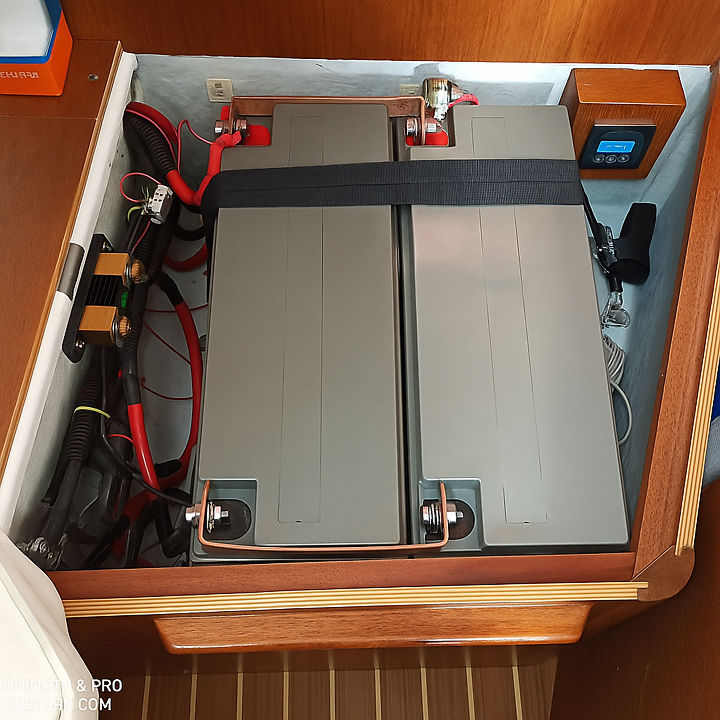Tech-Talk: Guide for Lead-Acid Battery Winterization Before Laying Up the Boat
- Editor

- Oct 22
- 4 min read
When the sails come down and the covers go on, it’s easy to forget what’s happening below deck — especially inside your batteries. Every winter, countless cruisers discover that “perfectly fine” batteries in October are half-dead by April.
In this week’s Tech Talk, electrical systems expert Doruk Kocuk explains how to properly winterize lead-acid batteries — both sealed and serviceable types — so they survive the off-season without losing their spark.
Whether your boat stays in the water or goes ashore, these practical steps will save you both frustration and voltage next spring. ⚓
How to Winterize Your Lead-Acid Batteries
Many readers have been asking how to properly winterize their lead-acid batteries before laying up the boat. Fair question — these batteries don’t like being ignored for months. ❄️ Cold slows their chemistry, self-discharge keeps going, and any bit of undercharging quietly turns into sulfation. A few hours of care now can save you a spring full of voltage drama.
→ You can also check our guide on Preparing Your Boat’s Electrical System for Winter for broader seasonal checks.
Two Families, Two Habits
Lead-acid batteries come in two broad types, and they don’t age gracefully the same way.
Maintenance-free (AGM, Gel) — These sealed types don’t need topping up, but they hate sitting half-charged. Before winter, make sure they’re fully charged and left on a suitable shore-powered charger that can manage long-term float maintenance. If your boat stays in the water, keep essential systems like the bilge pump powered as usual, but make sure the charger can easily keep up with the standby loads. ⚡
Serviceable flooded types — These need more attention. Check the electrolyte level after charging, not before, and top up only with distilled water if the plates are exposed. 💧 Clean the tops of the cases, make sure vents aren’t blocked, and let the batteries rest on a proper maintenance charge through the winter.
Temperature Compensation — Not Optional
Charge voltage depends on temperature. What’s perfect at 25 °C is too low at 5 °C and too high at 35 °C. A rough rule: adjust by about –3 mV per °C per cell (–18 mV per °C for a 12 V battery). Without compensation, cold charging leaves your battery undercharged, and warm charging boils it. If your charger doesn’t have a temperature sensor, charge at room temperature before reconnecting it on board for winter maintenance.

Repeated Absorption
When your charger finishes charging, it switches to float mode — that gentle trickle that keeps the battery topped up. But if it stays on float for weeks, the voltage is too low to dissolve the small sulfate crystals that naturally form. 🧊 To keep the chemistry healthy, let your charger return to absorption for a short while every week or two. That brief higher-voltage phase refreshes the cells and prevents sulfation from building up. ⚙️ If your charger can’t do this automatically, you can start a full charge manually every now and then.
Sulfation: The Silent Battery Killer
Sulfation happens when lead sulfate crystals harden on the plates after sitting undercharged too long. Those crystals block active material and steal capacity. You can reverse early-stage sulfation with full, regular charging or a desulfation mode on a smart charger. Leave it too long, and the crystals become permanent — then your “deep cycle” battery is just a heavy box of regret. 🪫
Terminals: Clean First, Protect Later
Corroded terminals mean wasted volts. Disconnect the cables one at a time only if necessary for cleaning, polish the posts and lugs until shiny, and reconnect tightly. ✨ Once secure, protect them from moisture with dielectric grease or a corrosion-inhibiting spray — but only after the connection is made. Never put grease between contact surfaces; it’s meant to seal from the outside, not block conductivity. 🧴

The Final Act — One Last Charge
When everything else is done, give your batteries one full charge cycle before winter. That ensures the plates are fully converted and any remaining sulfate is minimized. Keep the charger connected through the winter if shore power is available, ideally one that can handle temperature compensation and periodic absorption refreshes. 🌬️
If you’re storing the boat on land, disconnecting may make sense — but for a boat in the water, batteries must stay online for safety systems. ⚓ Just make sure the charger, cabling, and protection devices are in good condition and ready for unattended operation.
Winter doesn’t kill batteries — neglect does. Give yours a proper send-off before the cold sets in, and they’ll wake up ready to work next spring. 🌅

⚓ Ready for Winter, Charged for Spring
Winter doesn’t have to mean dead batteries and springtime surprises.With a few hours of attention and the right charging habits, you can keep your electrical system healthy for years.
For more winter prep advice, see How to Choose the Right Boatyard for Winter.
If you enjoyed this Tech Talk, subscribe to Sailoscope for more expert tips, cruising insights, and honest stories from life afloat.


